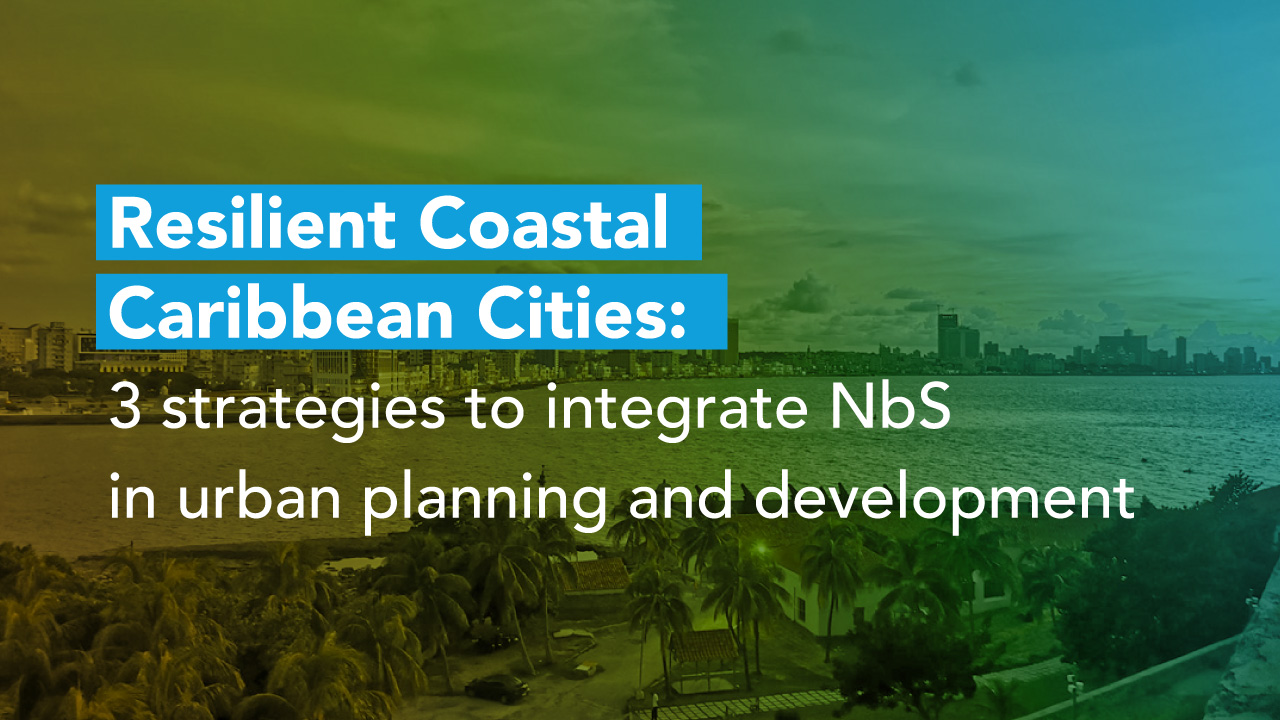The Caribbean faces disproportionate impacts from climate change, with rising temperatures, erratic rainfall, sea-level rise, and extreme events causing extensive human, natural, and economic losses.
The multi-dimensional vulnerability of the insular Caribbean is exacerbated by limited economic diversification and remoteness1. Urban settlements are highly concentrated along coasts and suffer heightened exposure due to inadequate planning and development2. However, coastal cities also represent fertile ground for scaling up solutions that can positively impact the population and the environment.
Nature-based Solutions (NbS) involve actively conserving, restoring and managing ecosystems, offering benefits for cities, including climate adaptation, food security, and livelihood opportunities3. To encourage the widespread uptake of NbS in coastal cities of Caribbean islands, it is key to mainstream them into urban planning and development. This climate capsule highlights 3 strategies to do so.
1. Promote a supportive regulatory framework for NbS
Carefully designed and implemented national policy instruments and local regulations can be powerful catalysts for NbS. For instance, Cuba’s State Plan to Confront Climate Change “Tarea Vida” takes a proactive stance to regulate the population density and infrastructure concepts in coastal settlements facing high flood risks. Considering that 27% of the urban population is located on fragile ecosystems4, the plan emphasizes on integrating Nature-based Solutions, such as beach, mangrove, and coral reef restoration, into urban planning processes.
At the local level, the Kingston and St. Andrew’sMunicipal Development Order mandates urban development activities to consider adaptation solutions. The Order promotes natural rainwater management, green infrastructure, and the preservation of watershed areas, reefs, and wetlands to strengthen the cities’ resilience. This instrument is used by municipal and sectoral authorities as well as developers and communities.
Actions you can take:
- From the academy: generate and share information to influence decision-making in urban planning and development processes in coastal areas (e.g., research on climate risks and NbS cost-effectiveness).
- From civil society: participate in urban planning and Integrated Coastal Zone Management processes to promote the inclusion of NbS for adaptation.
- From local governments and developers: revise building codes and zoning regulations to favor adaptive capacity of coastal communities and investment in NbS.
2. Build the technical capacities of local actors
Effective integration of NbS into planning requires trained actors and institutions who can understand climate scenarios and vulnerability assessments, assess adaptation strategies, bring stakeholders together and manage the rollout of initiatives5.
As part of the CityAdapt and the Nature4Cities projects, the Caribbean cities of Kingston (Jamaica) and Manzanillo (Cuba) are building the capacity of local actors to integrate NbS into urban planning and development. For example, a climate risk assessment of Kingston and St. Andrew, in Jamaica, identified that the island’s capital was both affected by flooding and inconsistent water supply. Local authorities were capacitated by the project to take a hybrid approach, integrating ecosystems restoration, permeable pavements and sustainable water storage to increase infiltration, reduce flooding and improve water security; this training is now being institutionalized within the University of the West Indies (UWI), the Jamaican University of Technology and the Management Institute of National Development, as well as the Caribbean Centre for Development Administration.
On the other hand, the project “Mi Costa” in Cuba will benefit more than one million people in seven coastal settlements in southern Cuba and 24 municipalities, including Manzanillo. The project proposes the creation of a Capacity Building Center in each municipality to train local governments and communities with tools to face the deterioration of the coastline and future climate change scenarios. These centres include bibliographic, technological and other resources that will benefit the teaching and learning process in the short and long term6.
Actions you can take:
- From local governments or the private sector: roll capacity building programs for your teams to be able to design, evaluate and implement NbS in coastal cities.
- From the academy and civil society: promote the integration of climate adaptation and NbS approaches in formal and informal education programs (e.g., engineering, financing, administration and law)
3. Manage trade-offs between short-term gains and long-term benefits
Integrating NbS in urban planning and development involves taking a landscape-level approach that has implications on lands with different ownership and tenure, in which high opportunity costs in the short term could diminish the buy-in of local actors. In Jamaica, for instance, some local actors expressed lack of interest in integrating NbS arguing the lack of short-term benefits.
In this context, managing the trade-offs between short-term gains and long-term benefits is essential. In addition to raising awareness, financing strategies could be used for this purpose. For example, Nature4Cities in Manzanillo supports the local government to define innovative financial mechanisms for NbS.
Actions you can take:
- From national and subnational governments: create incentives for homeowners and businesses to adopt NbS, for example, by decreasing property taxes or insurance costs.
- From the private sector: transform business models within the tourism and fishing sectors to sustainably manage coastal and marine ecosystems. This will enhance the long-term viability of businesses in cities that must adapt to climate change.
- From civil society: champion the implementation of locally led NbS. For example, promoting locally and sustainably managed marine and coastal ecosystems that deliver benefits for food security and livelihoods opportunities.
By integrating Nature-based Solutions into urban planning and development, coastal Caribbean cities can embark on a more resilient and nature-positive trajectory. Everyone can take action to build supportive policies, enhance local capacities, and find innovative ways to manage trade-offs.
With special thanks to Ophelie Drouault, Angela Prias, Shanice Bedward-Grant, and Gabriela Garcia, specialists in climate change adaptation
References
1 United Nations Barbados and the OECS, 2020. Vulnerability of Eastern Caribbean Countries.
2 Mycoo, M., M. Wairiu, D. Campbell, V. Duvat, Y. Golbuu, S. Maharaj, J. Nalau, P. Nunn, J. Pinnegar, and O. Warrick, 2022: Small Islands. In: Climate Change 2022: Impacts, Adaptation and Vulnerability. Contribution of Working Group II to the Sixth Assessment Report of the Intergovernmental Panel on Climate Change [H.-O. Pörtner, D.C. Roberts, M. Tignor, E.S. Poloczanska, K. Mintenbeck, A. Alegría, M. Craig, S. Langsdorf, S. Löschke, V. Möller, A. Okem, B. Rama (eds.)]. Cambridge University Press, Cambridge, UK and New York, NY, USA, pp. 2043–2121, doi:10.1017/9781009325844.017. https://www.ipcc.ch/report/ar6/wg2/chapter/chapter-15/
3 PNUMA (2022). Las Soluciones basadas en la Naturaleza (SbN) en ciudades latinoamericanas: De medidas piloto a la integración en la planificación.
4IUCN, 2014. Lineamientos para la transversalización del tema de género en los esfuerzos por mitigar y adaptarse al cambio climático en Cuba.
5 UNEP (2022). Harnessing Nature for Climate Resilience.
6 Hidalgo Rodríguez, A. (2023, February 28). Granma: Una provincia empoderada y consciente del proyecto mi costa. La Demajagua. https://lademajagua.cu/granma-una-provincia-empoderada-consciente-del-proyecto-costa/



